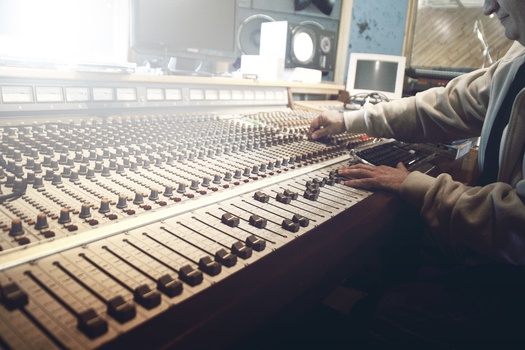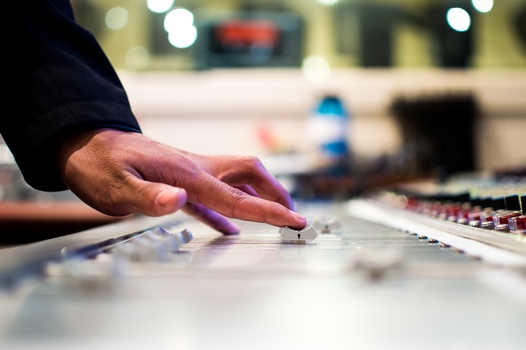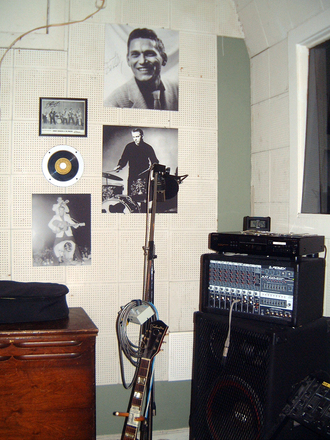
By Matt W
8 Tips to Make Vocals in Music Recordings Sound Professional
First things first
Every voice is different. Settings that help the voice of the top-selling artist to be at the top of the charts, might do nothing to help your voice. In fact, such settings might even harm it. Keep that in mind as you read advice regarding frequency numbers, etc.
Your voice is unique. And what is unique, has to be treated as such. That’s why opinions about microphones vary so much. I will say this though – the better the vocal recordings, the easier it is to mix them properly.
1. Equipment
Let’s say you take a picture of a sunset over Paris with an old, two megapixel camera. It’s going to be a great picture nonetheless. But if you try to make a poster out of it, you’ll end up with a blurry, pixelated mess. What the pixels and camera quality are to your eyes, bits and studio equipment are to your ears.
Expensive, high end studio equipment can indeed give you a sense of what makes it expensive, or to put it correctly, what makes it different. Using it is a good way to train your ears. But never suppose that quality lies in the price, because like I said, every voice is unique and just because something is expensive doesn’t mean it makes your voice sound better.
With that said, if you ever have the chance to record with different studio equipment, different mics, different workstations etc., please do so! It will give you the opportunity to consider the best arrangement for your voice.
2. Environment
Keep recording sessions dry. You can add every reverb and every room ambiance you can think of with just a few clicks, but it is almost impossible to remove recorded room ambiance from your signal. So, do everything possible to keep your room dry.
If you have a booth, you are probably in a good situation. If you don’t have one, try to build one (it’s easier than you think-just Google “vocal booth self-made” to get some inspiration). If you don’t have time or the money for it (you don’t need a lot), at least try to separate your recording area from the rest of your room in some way.
3. Panning and Track Numbers
Everybody has a different approach to panning and the number of vocal tracks that are necessary. I’ll just tell you my opinion.
The lead vocals for verses are usually placed in the center. If you want to give your listener a certain intimacy, it’s always better to use only one vocal track. It just keeps your mix clear and it makes the listening experience better.
I’m not a fan of doubling the entire verse. With all the subtle differences between the two takes – including the consonants that never get matched up perfectly – it just makes your vocals sound messy. If you want a clear lead vocal, only use one track.
The next thing I would do is record two tracks in which you double certain parts of the verse. Pan them both in opposite directions (15 to 40), and reduce their volume. You have to hear a difference between the doubled part and the part without doubles, but don’t make it that obvious. Just so that it gives your vocals and the meaning of what is being said in certain parts more power.
Doubling is quite common in all kinds of music, especially in rap music. If you are singing, rather than rapping, be careful when doubling because it can make your vocals sound too artificial and too pop-ish. On the other hand, if you are going for that pop sound, doubling might be a great tool for you!
In the chorus, you can record two vocal tracks and pan them between 30 to 60 – one to the left, one to the right. Another option would be to record a third track, which is placed in the center, but not as loud as the lead vocals in your verses.
Some people record one lead track and double it (copy and paste it) and edit them differently (EQ, compressor, pitch, etc.) This can be another great tool to make your vocals sound different in certain parts of the song, just like the panning advice I mentioned above. Try it out and see how you like it.

4. Equalizing Vocals
At first, add a low cut filter on every vocal track. It’s quite common to raise the frequencies from 2 kHz and up for female vocals, and 3 kHz and up for male vocals. Frequencies between 6 and 8 kHz are very sensitive because this is the place where the S sounds are at home. Be careful here. What sounds good and clear on your studio monitors, might feel like needle-sticks to your ear when listening with earphones. Always double- and triple-check your mix on different playback devices like monitors, headphones, earphones, etc.
If the S is too sharp, reduce it. You can either add a native de-esser in your DAW by applying a dynamic equalizer, or by manually reducing every S in your vocal recording. The latter is the most time-consuming, but gives you the most control. Keep in mind that equalizers and de-essers don’t recognize consonants, they recognize frequencies. And some consonants might share the same frequencies as the S. So only apply native de-essers with caution.
5. Reverb
When adding reverb, keep in mind that the lead vocals should usually be just that – leading. So, adding too much reverb is disadvantageous. Only use small room reverbs. You shouldn’t even recognize the reverb, except when it’s gone. It also depends on the instrumental. If there’s a lot going on in your instrumental already, a big reverb would probably be too much for the song. Yet if your instrumental has much room/space, reverb on vocals can be very effective.
6. Breathing Sounds
Of course, your vocal recordings will include breathing sounds. Whether the presence of such breathing sounds should be strong or weak is a question of personal taste. In my opinion, they are extremely important. That doesn’t mean they should be extremely loud though. It means you should edit them separately and with great care.
If a breath is too loud, then reduce its volume. If it is too long, then replace it with a good breath from the same take or from another one. If a breath makes a certain part feel too hectic, then remove it. If it feels like a breath is missing, add one.
These adjustments can improve the flow of your recordings and make your individual takes feel more cohesive. They can also be used as a kind of glue to stick two consecutive takes together to make them feel like they were recorded at once!
But: Don’t double them, and don’t cut them. Always fade in and fade out.
7. Consonants
If you have recorded one lead vocal track and two doubling tracks for a phrase such as, “I’m looking at the mist,” you mind encounter a rattling noise at the end, because the three T’s of “mist” will not appear at the exact same time. You can either move them closer together, so the rattling sound disappears, or you can remove two of them. Fade out the tracks you removed the consonant from to avoid unwanted cutting sounds.
8. Breaks
Many people avoid breaks because they want to finish their project or they don’t believe breaks are necessary. But human senses get accustomed to both good and bad stimulations.
You might not recognize something in a room, if you just came in from the sun, but once your eyes adjust, you will notice all sort of things you had missed. When you enter a restaurant, you might perceive good smells, but after you have been sitting at your table for a while, your perception of those smells vanishes. The same thing happens with your ears. If you have been mixing vocals for a couple of hours, you might think they sound good and clear, but the next day, you might just feel ashamed at how muddy they sound.
Take short breaks, if that is all the time you can afford. Taking longer breaks – in which you change your environment – is better. And before you perform your final mix, set your project aside for a couple of days. It’ll give you fresh ears when you resume. At least try it once. Afterward, I think you’ll be pleased that you didn’t release your music without a two-day break.
That’s it for now. Try to apply some of this the information and see how it fits. Consider these advices and numbers as a point of reference, but always let your ears decide! Experiment, have fun, and do what YOU like!
Visit http://www.skillymusic.com for professional beats, soundtracks and trailer music, as well as mixing and mastering services.
Article Source: http://EzineArticles.com/?expert=Matt_W
Memtech Acoustical Recording Studio Solutions:
- Baffles-absorbing the noise with various materials
- Barriers-contain noise to its origin
- Duct Lining-lining HVAC units to decrease noise
- Door Seals-keeping unwanted noise out of a room or to keep noise in
- Ceiling Tiles-absorbent tiles placed in the ceiling
- Fabritec Panels-decorative paneling designed to absorb noise
- Bass Corner Traps- traps low frequency sounds
- Sound Proof Windows-create a barrier between broadcast and control rooms
- Overly Doors

